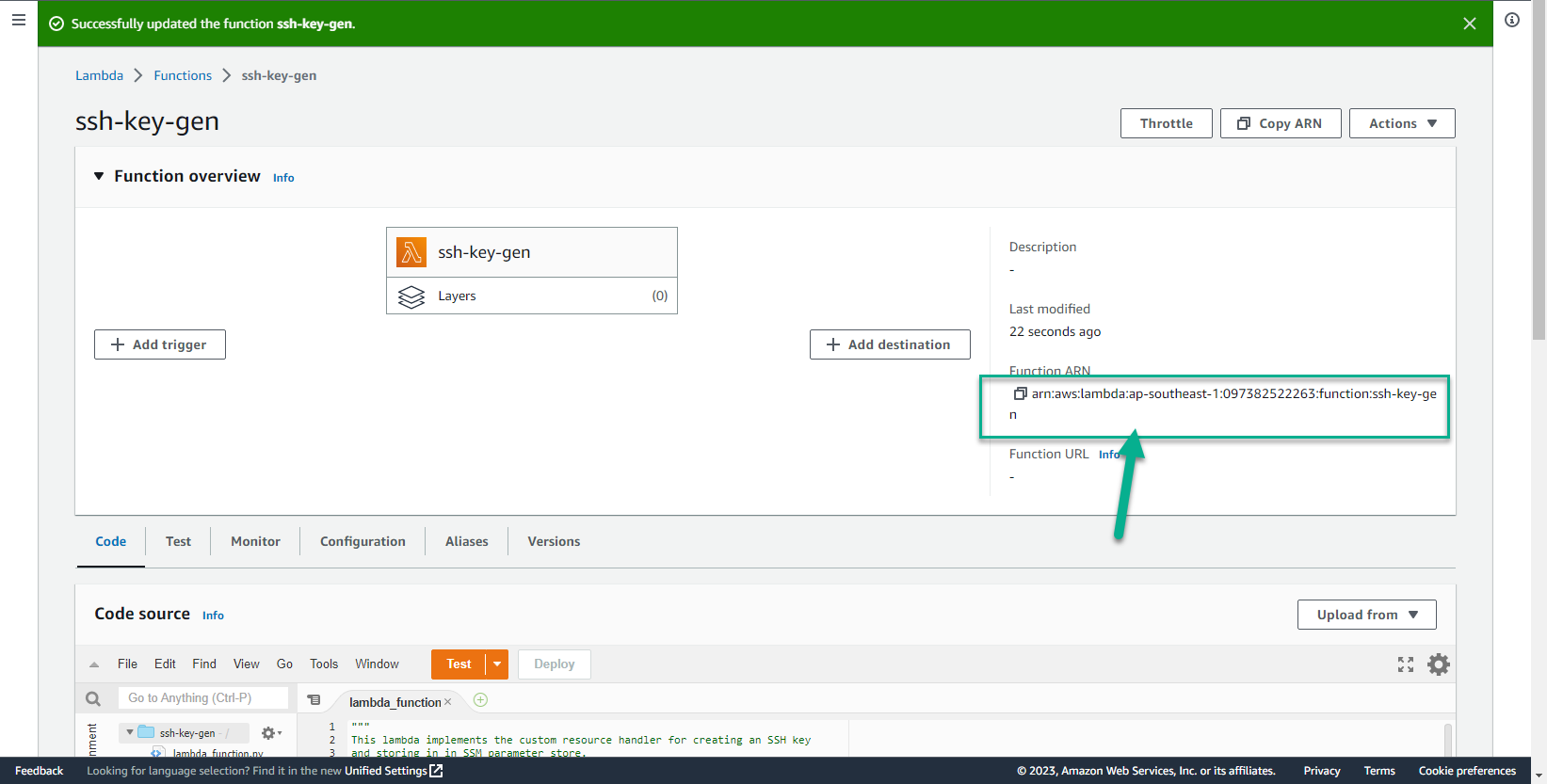Create Lambda Function
Create Lambda Function
- Access the interface AWS Management Console
- Find IAM
- Select IAM
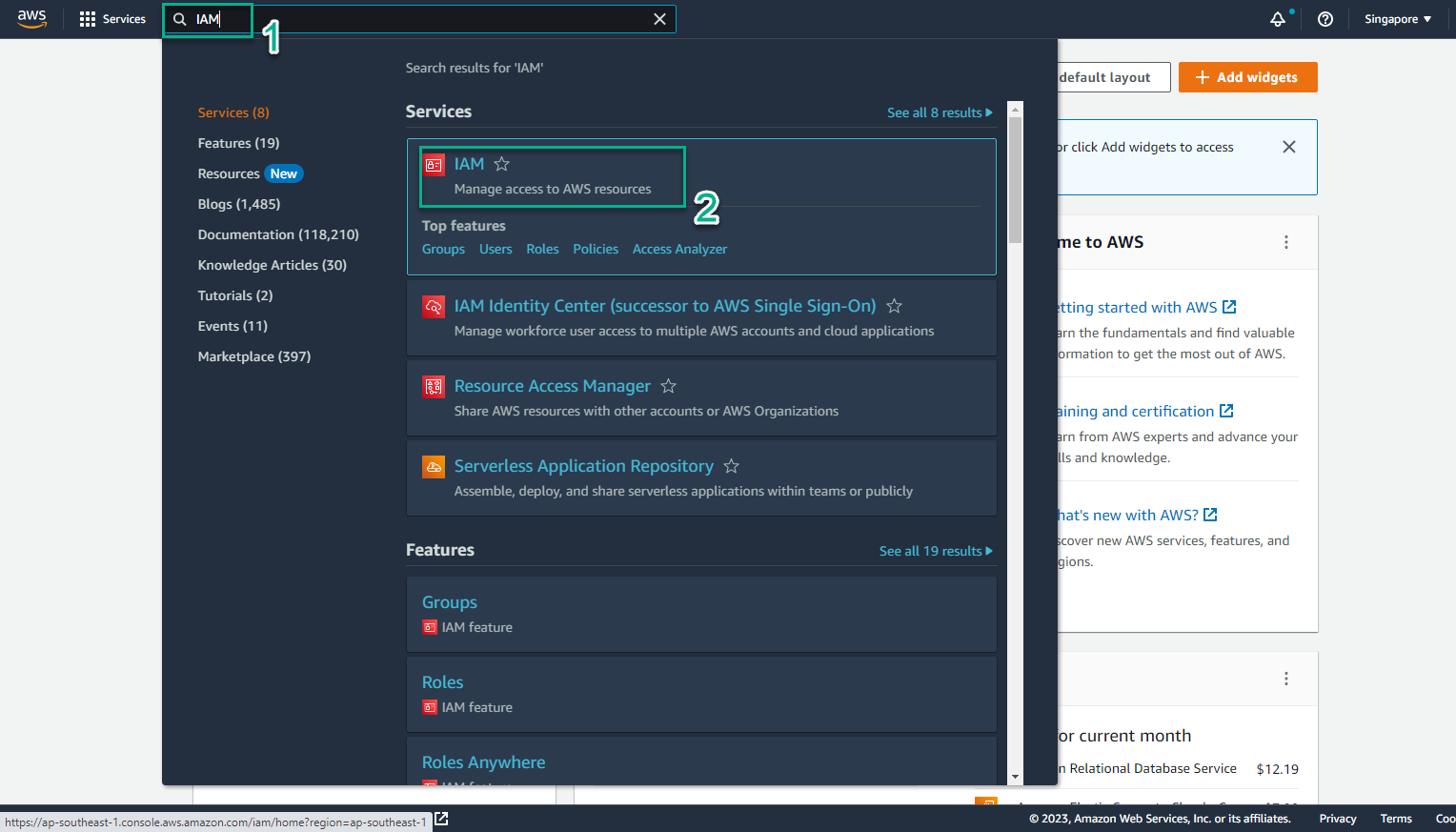
- In the IAM interface
- Select Roles
- Select Create role
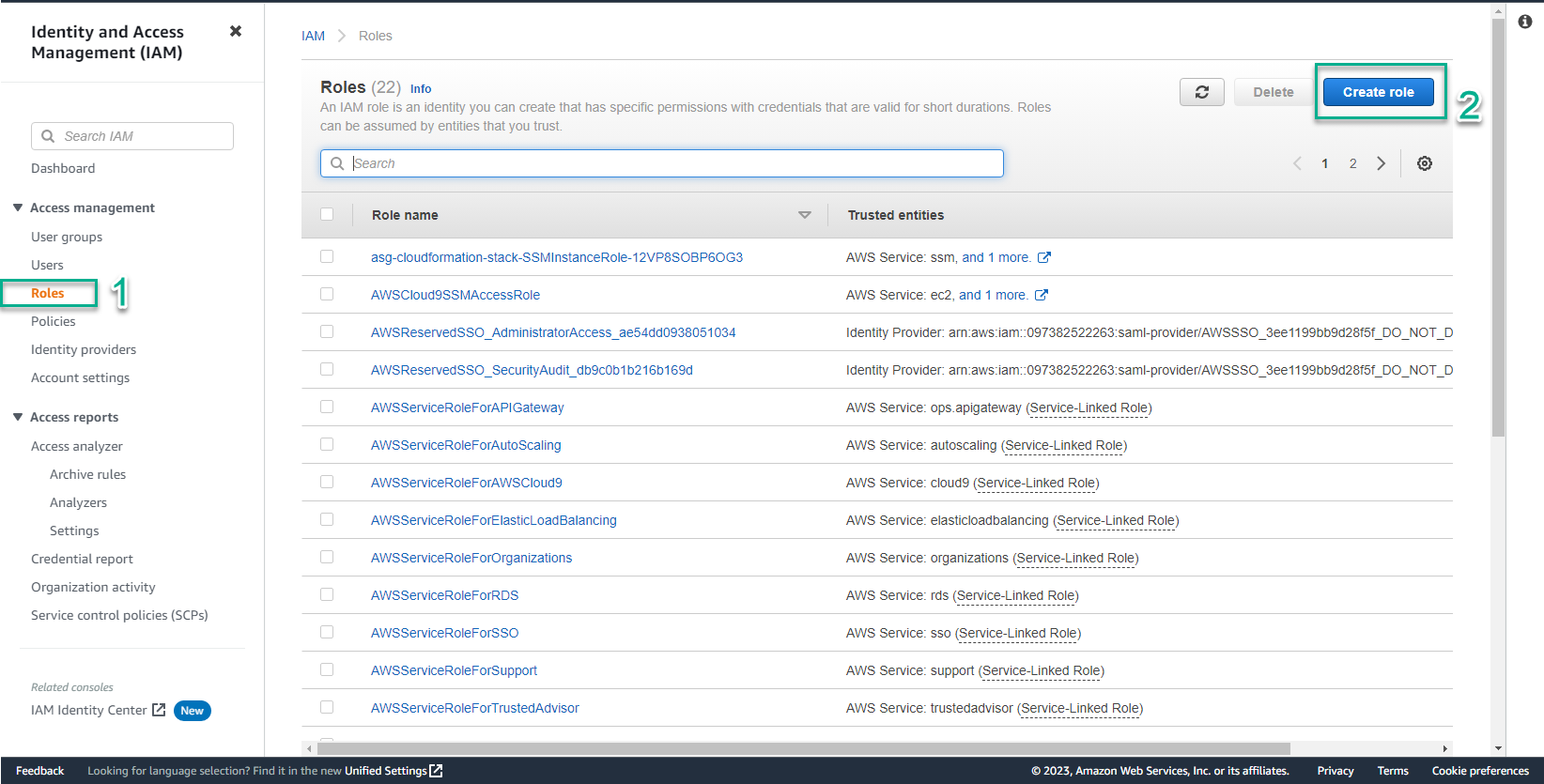
- In Select trusted entity step
- Trusted entity type, select AWS service
- User case, select Lambda
- Select Next
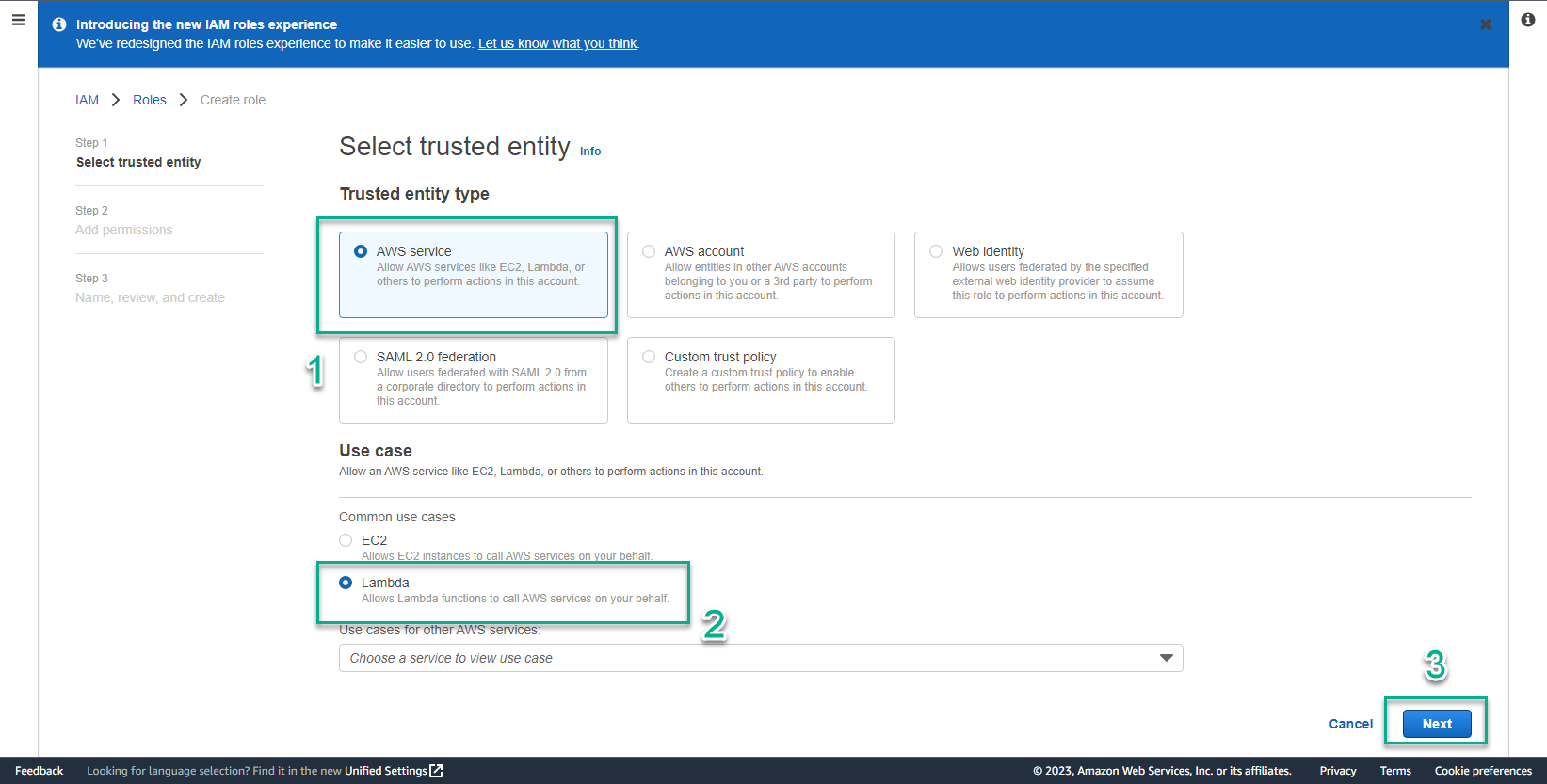
- In Add permissions step
- Select Add permissions
- Select Create Policy
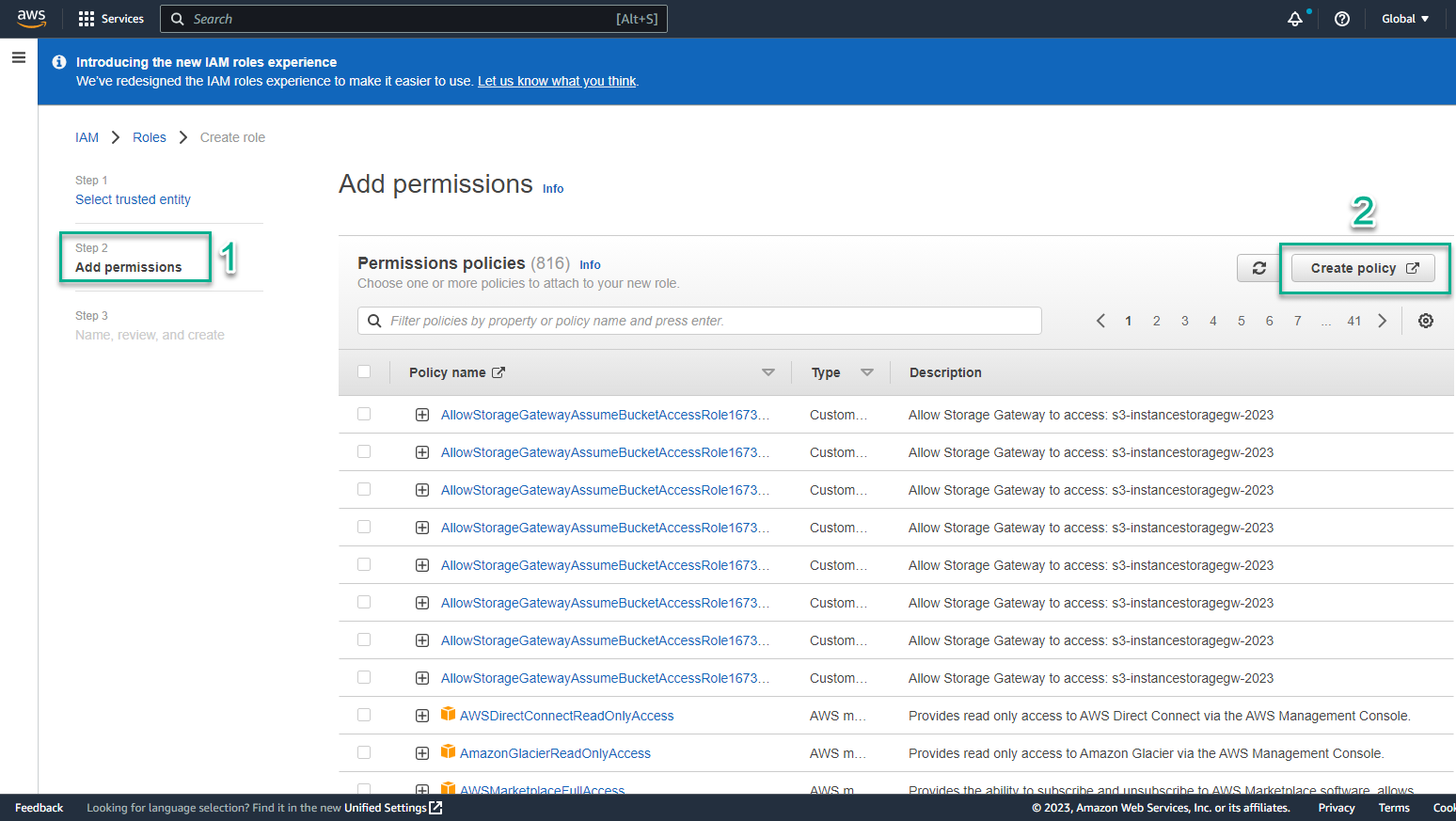
- In the Create policy interface
- Select JSON
- Copy and paste the following code:
{
"Version": "2012-10-17",
"Statement": [
{
"Effect": "Allow",
"Action": [
"logs:CreateLogGroup",
"logs:CreateLogStream",
"logs:PutLogEvents"
],
"Resource": "arn:aws:logs:*:*:*"
},
{
"Effect": "Allow",
"Action": [
"ec2:CreateKeyPair",
"ec2:DescribeKeyPairs",
"ssm:PutParameter"
],
"Resource": "*"
},
{
"Effect": "Allow",
"Action": [
"ec2:DeleteKeyPair",
"ssm:DeleteParameter"
],
"Resource": "*"
}
]
}
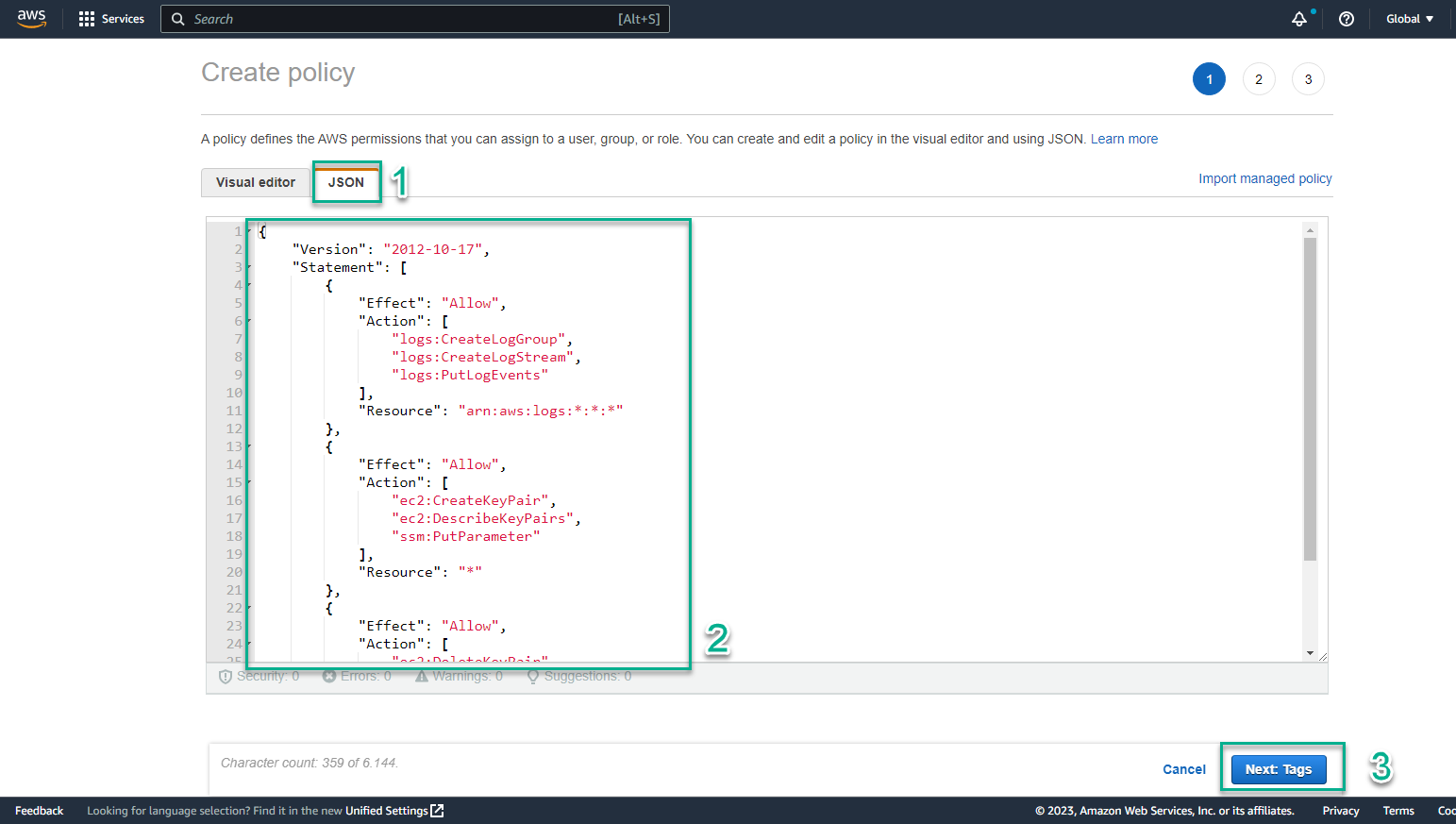
- Select Next: Review
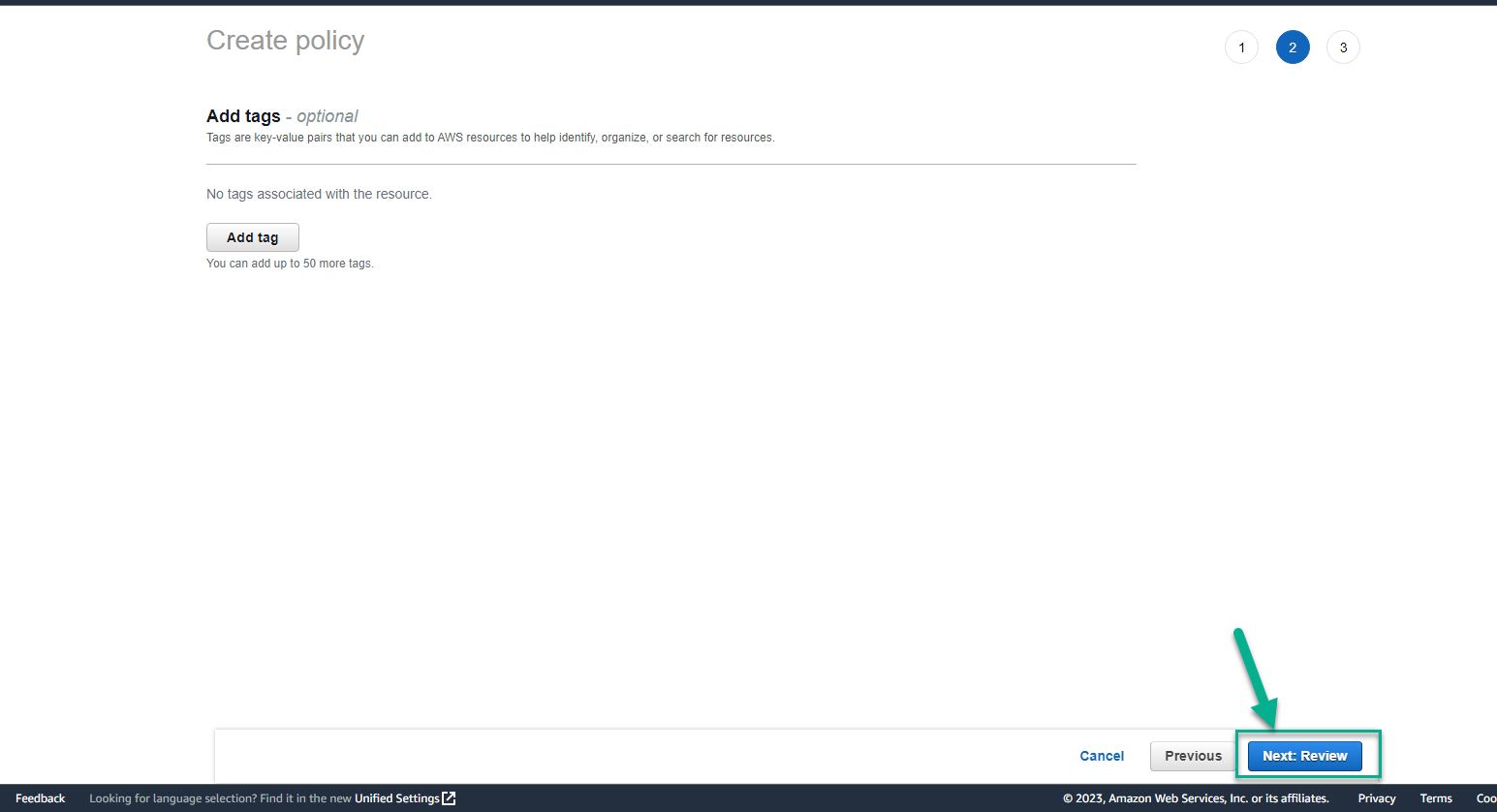
- In the Review policy interface
- Name, enter
ssh-key-gen-policy - View services that are Allow
- Select Create policy
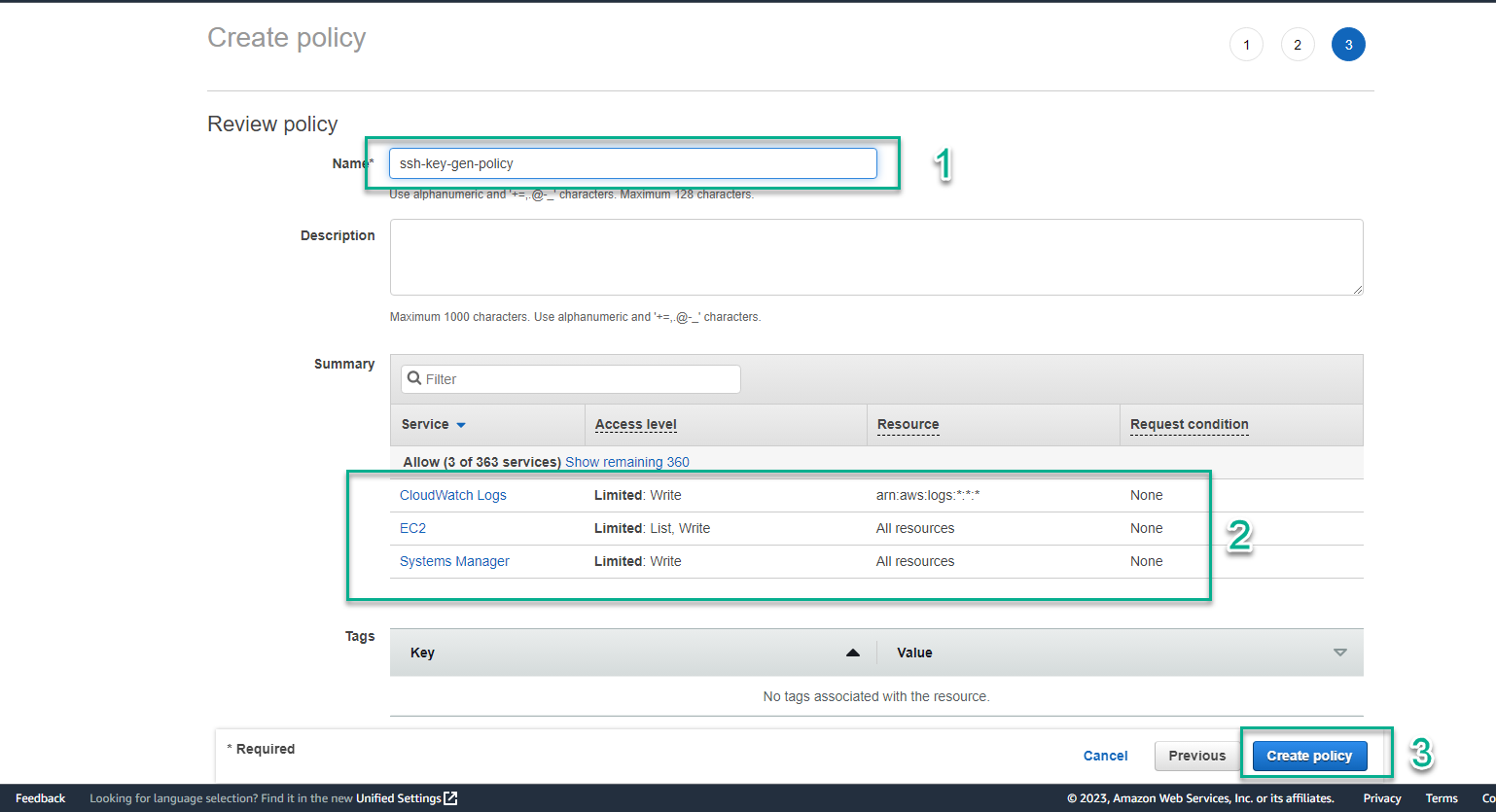
- Return to the role creation interface
- Select the newly created policy
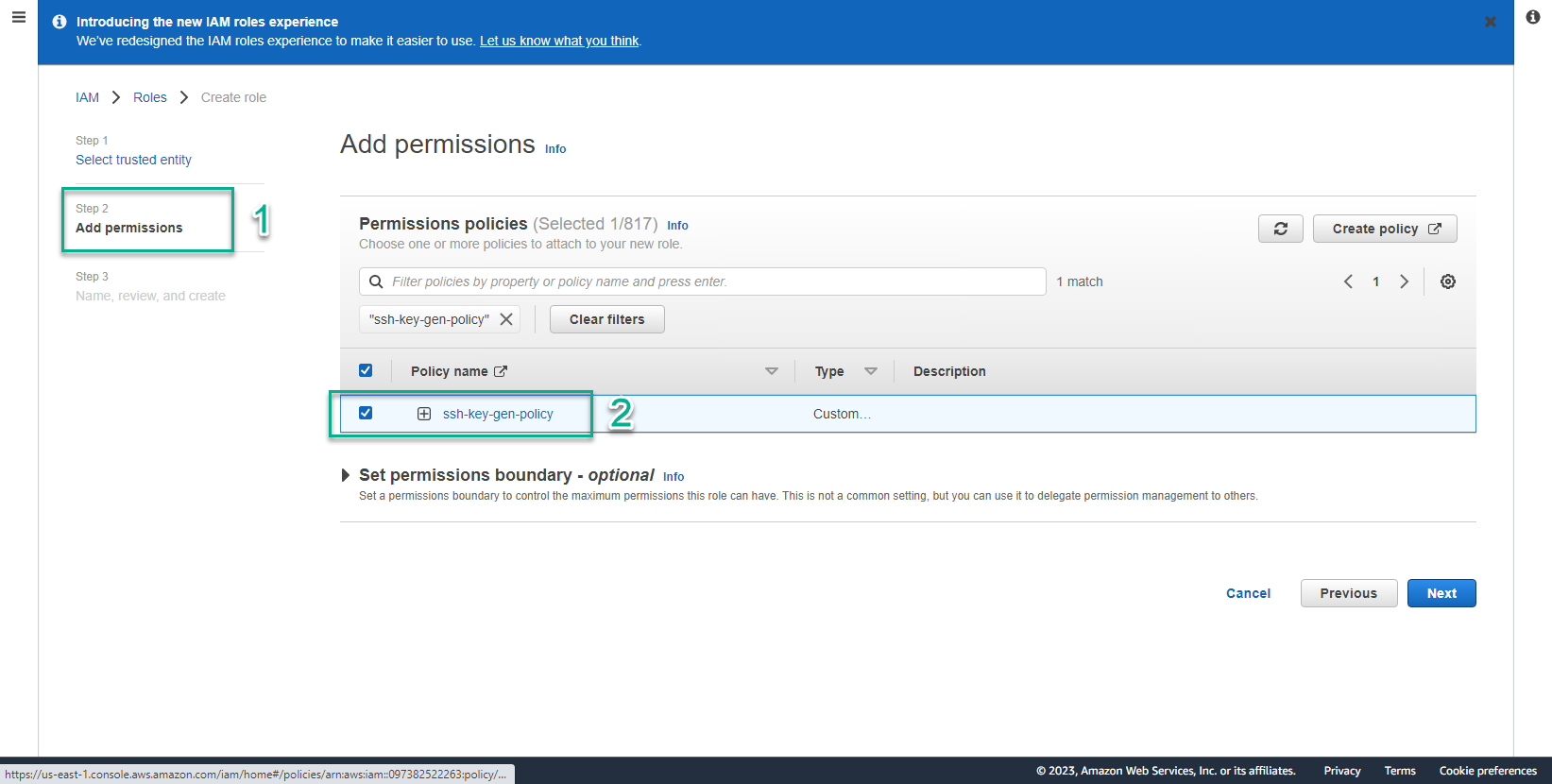
- Select Next
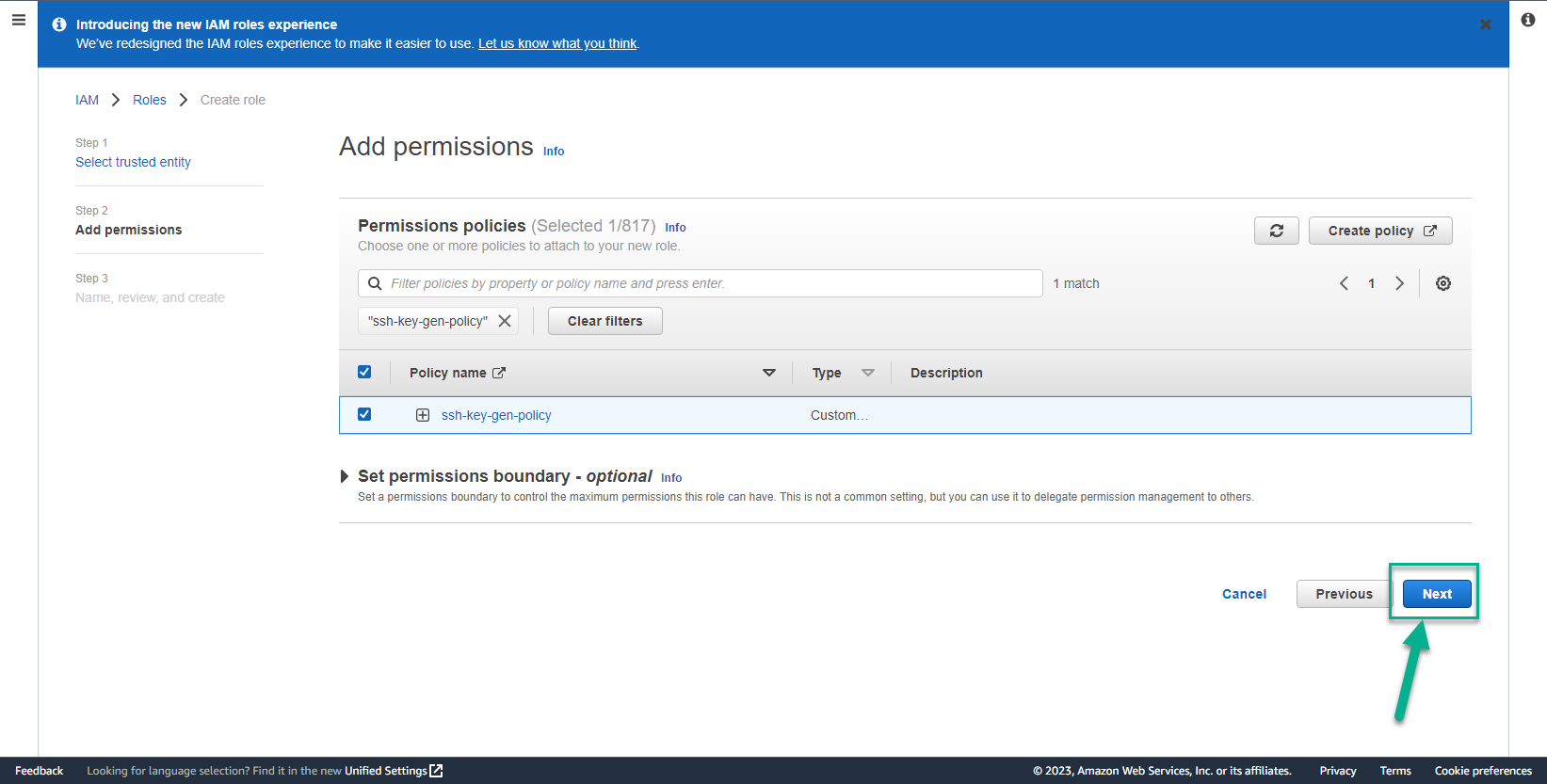
- In the Role details interface
- Role name, enter
ssh-key-gen-role
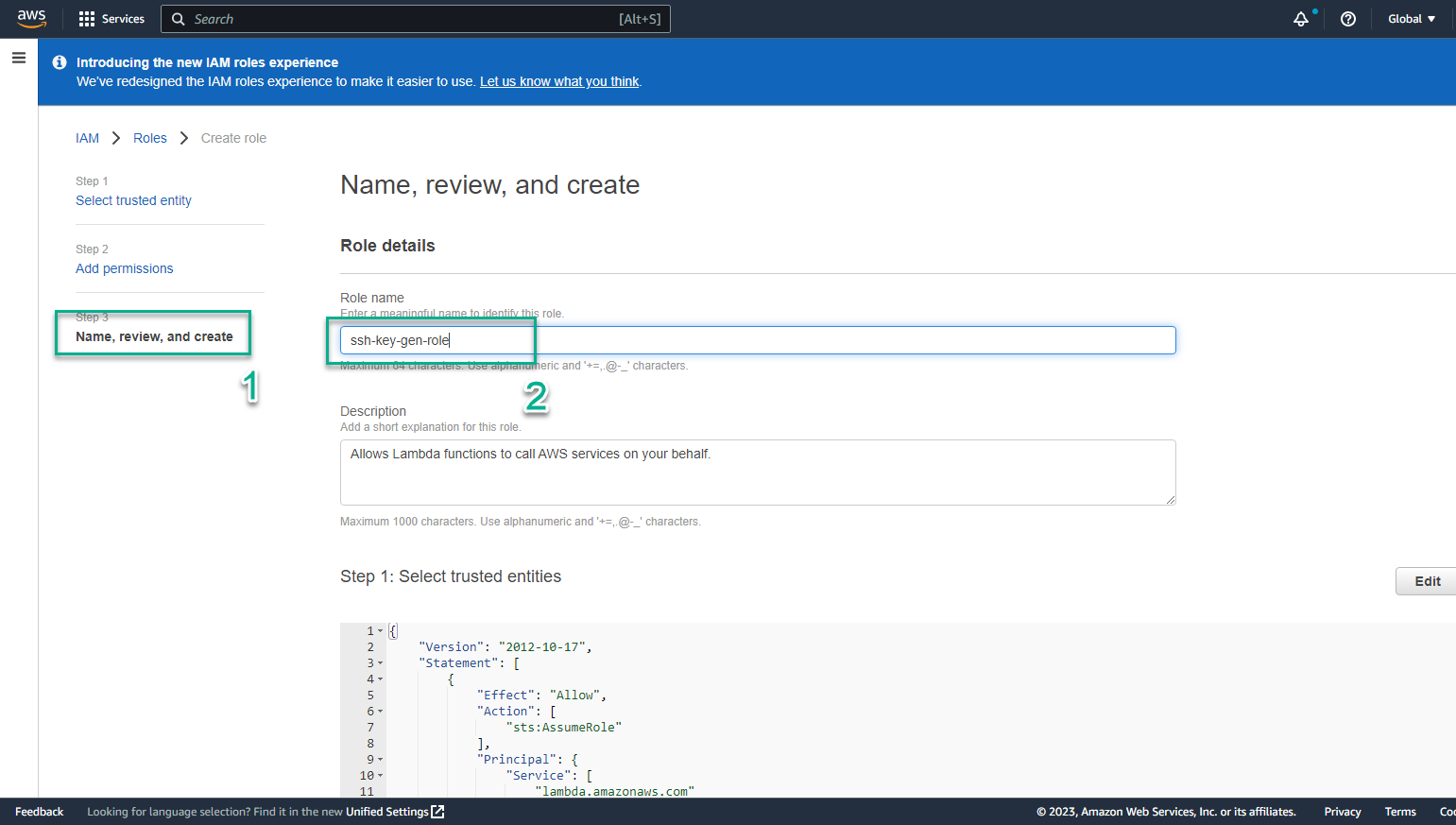
- Double check and select Create role
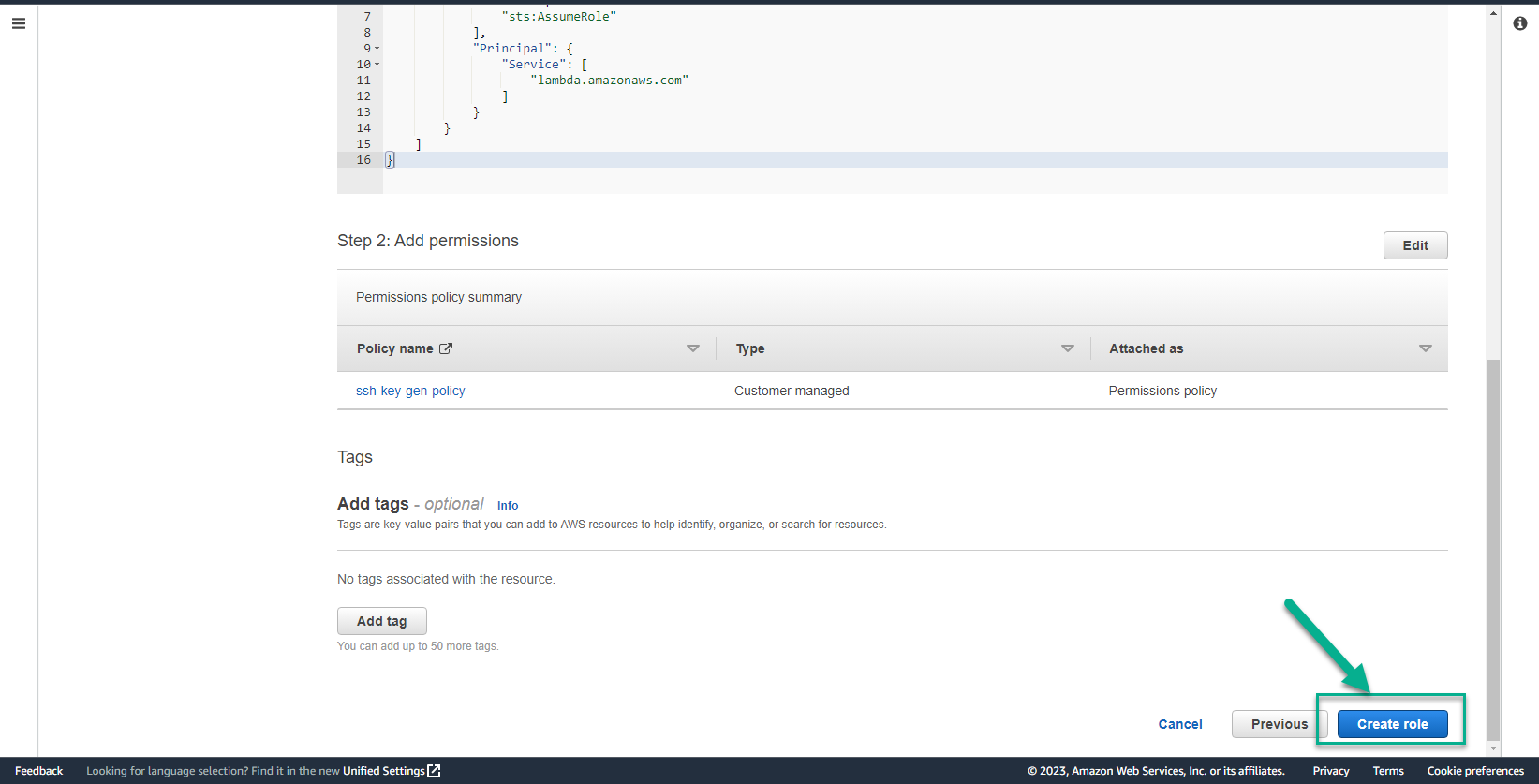
- In the IAM interface
- Find ssh-key-gen-role
- View created roles
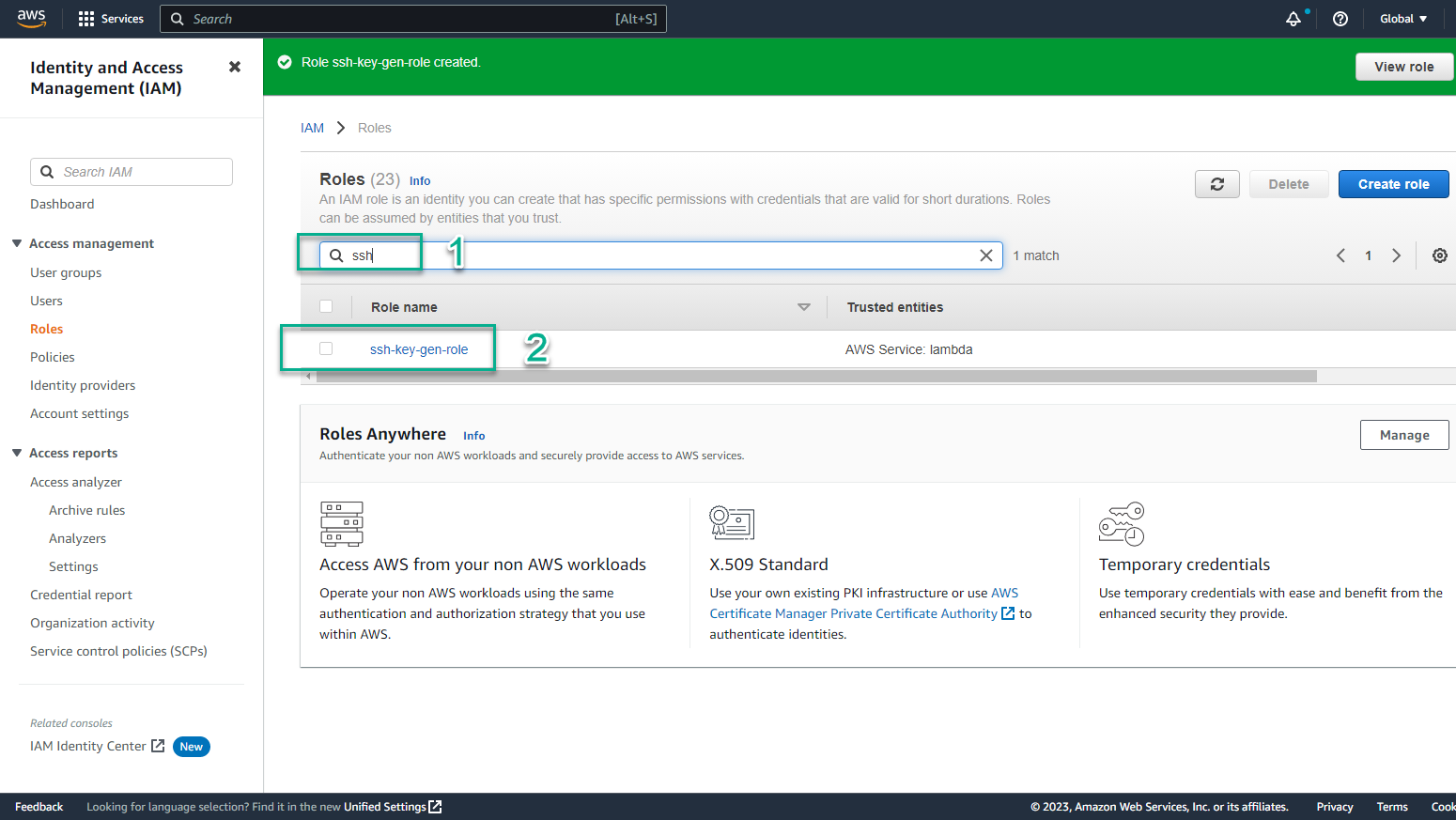
- In the [AWS Management Console] interface(https://aws.amazon.com/console/)
- Find Lambda
- Select Lambda
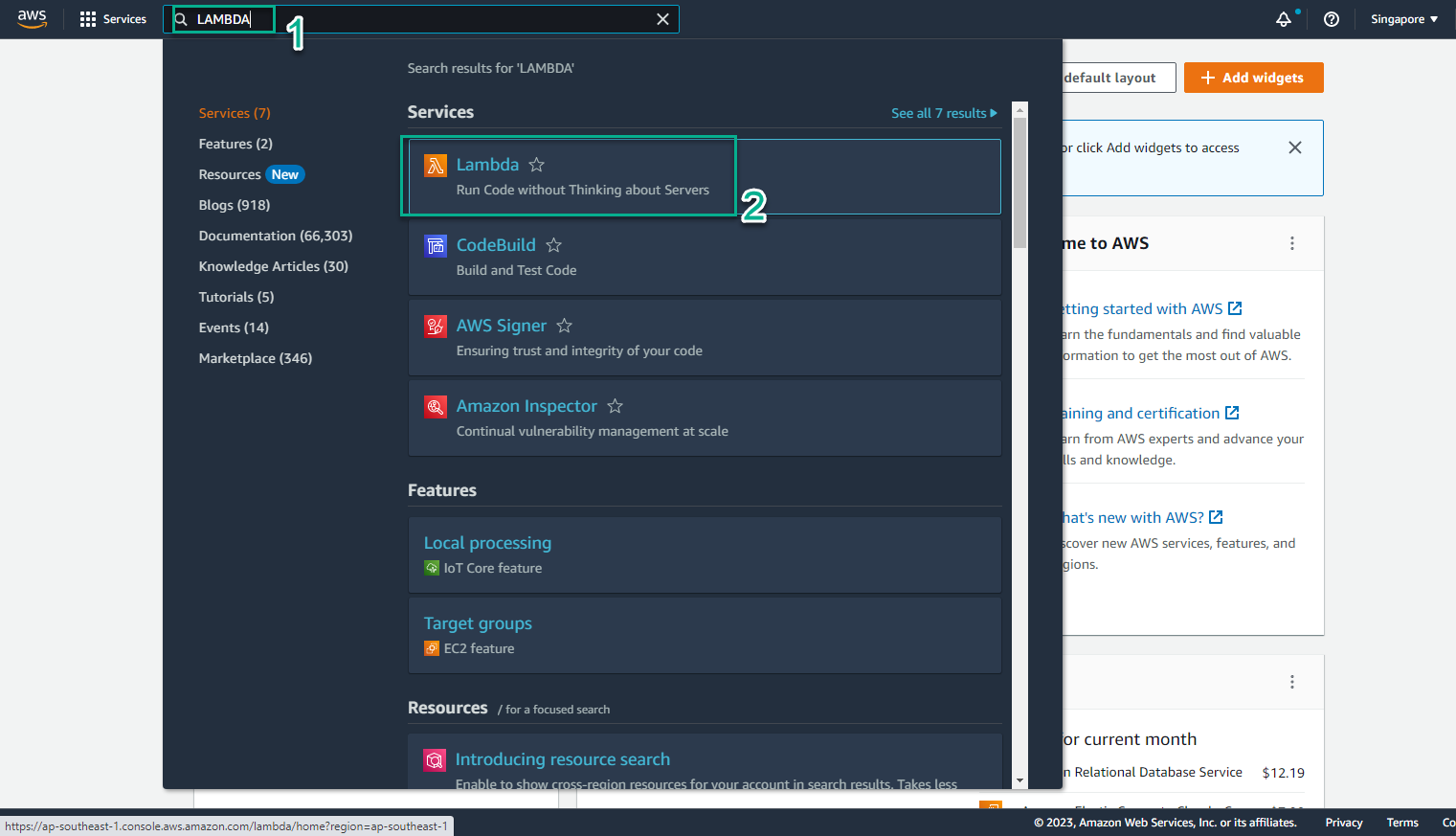
- In the AWS Lambda interface
- Select Functions
- Select Create function
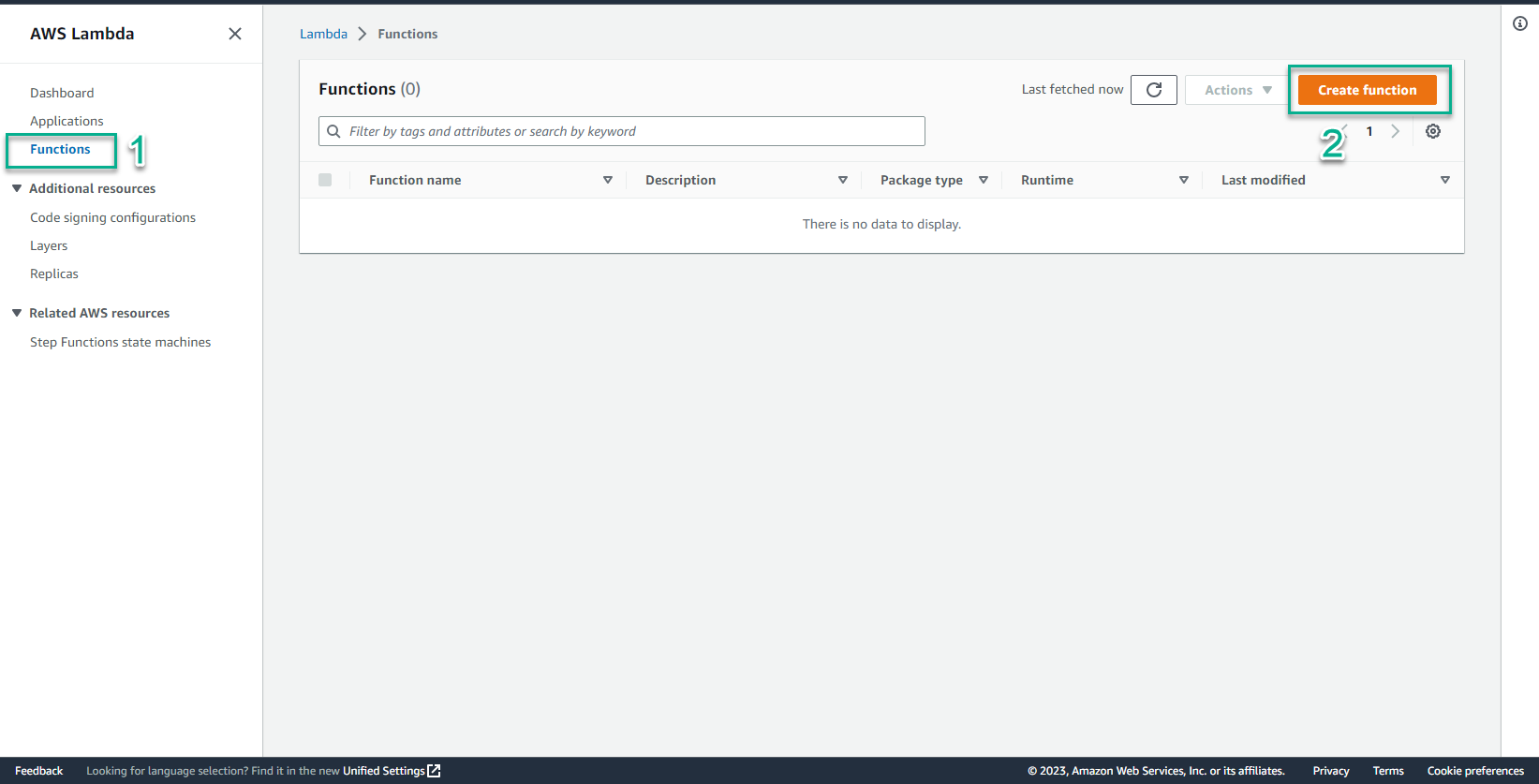
- In the Create function interface
- Select Author from scratch
- Function name, enter
ssh-key-gen - Run time, select Python 3.9
- Select x86_64
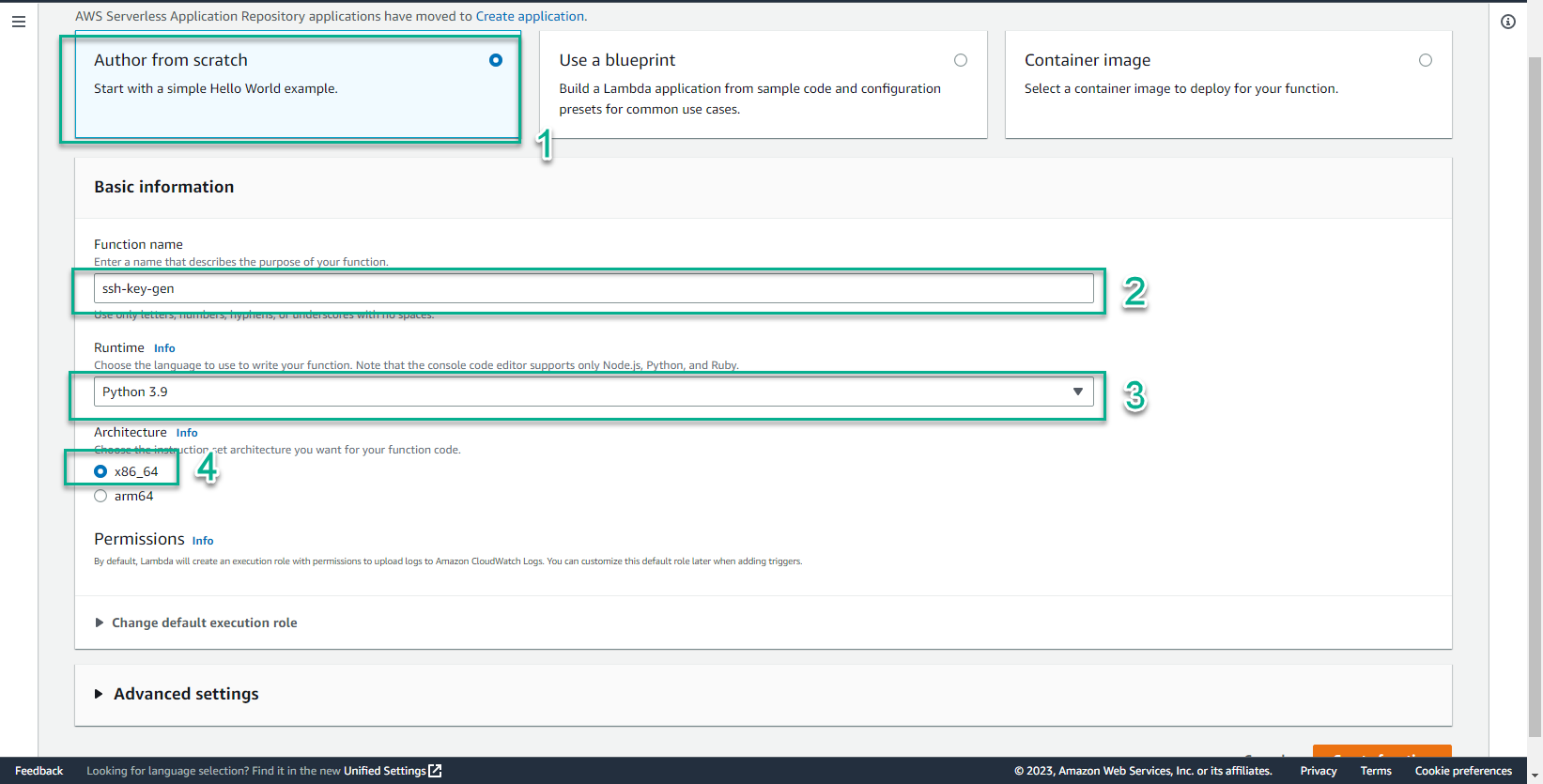
- In the Permissions interface
- Select Use an existing role
- Select ssh-key-gen-role
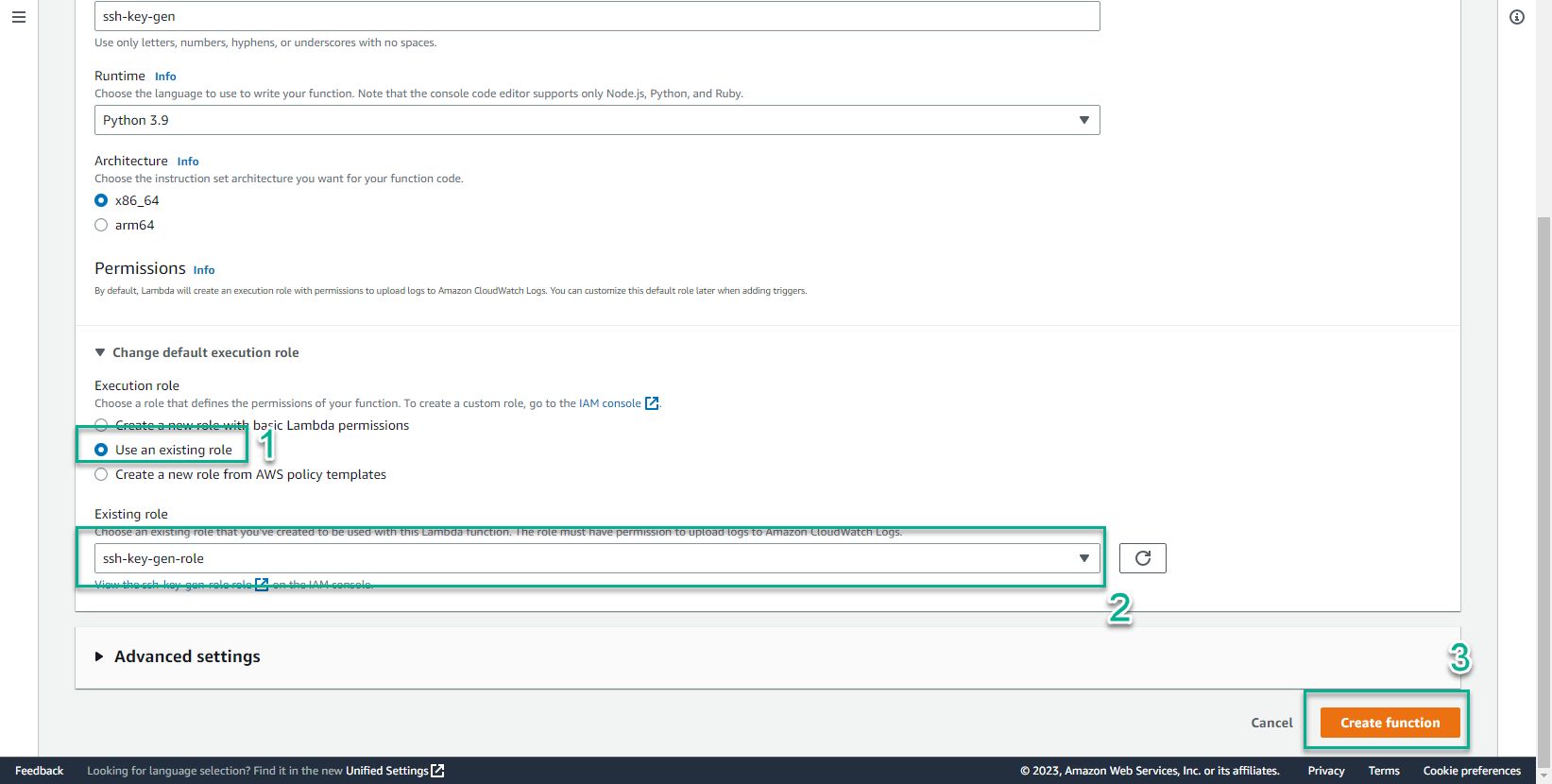
- In the function code editing content, enter the following code content:
"""
This lambda implements the custom resource handler for creating an SSH key
and storing in in SSM parameter store.
e.g.
SSHKeyCR:
Type: Custom::CreateSSHKey
Version: "1.0"
Properties:
ServiceToken: !Ref FunctionArn
KeyName: MyKey
An SSH key called MyKey will be created.
"""
from json import dumps
import sys
import traceback
import urllib.request
import boto3
def log_exception():
"Log a stack trace"
exc_type, exc_value, exc_traceback = sys.exc_info()
print(repr(traceback.format_exception(
exc_type,
exc_value,
exc_traceback)))
def send_response(event, context, response):
"Send a response to CloudFormation to handle the custom resource lifecycle"
responseBody = {
'Status': response,
'Reason': 'See details in CloudWatch Log Stream: ' + \
context.log_stream_name,
'PhysicalResourceId': context.log_stream_name,
'StackId': event['StackId'],
'RequestId': event['RequestId'],
'LogicalResourceId': event['LogicalResourceId'],
}
print('RESPONSE BODY: \n' + dumps(responseBody))
data = dumps(responseBody).encode('utf-8')
req = urllib.request.Request(
event['ResponseURL'],
data,
headers={'Content-Length': len(data), 'Content-Type': ''})
req.get_method = lambda: 'PUT'
try:
with urllib.request.urlopen(req) as response:
print(f'response.status: {response.status}, ' +
f'response.reason: {response.reason}')
print('response from cfn: ' + response.read().decode('utf-8'))
except urllib.error.URLError:
log_exception()
raise Exception('Received non-200 response while sending ' +\
'response to AWS CloudFormation')
return True
def custom_resource_handler(event, context):
'''
This function creates a PEM key, commits it as a key pair in EC2,
and stores it, encrypted, in SSM.
To retrieve the key with currect RSA format, you must use the command line:
aws ssm get-parameter \
--name <KEYNAME> \
--with-decryption \
--region <REGION> \
--output text
Copy the values from (and including) -----BEGIN RSA PRIVATE KEY----- to
-----END RSA PRIVATE KEY----- into a file.
To use it, change the permissions to 600
Ensure to bundle the necessary packages into the zip stored in S3
'''
print("Event JSON: \n" + dumps(event))
# session = boto3.session.Session()
# region = session.region_name
# Original
# pem_key_name = os.environ['KEY_NAME']
pem_key_name = event['ResourceProperties']['KeyName']
response = 'FAILED'
ec2 = boto3.client('ec2')
if event['RequestType'] == 'Create':
try:
print("Creating key name %s" % str(pem_key_name))
key = ec2.create_key_pair(KeyName=pem_key_name)
key_material = key['KeyMaterial']
ssm_client = boto3.client('ssm')
param = ssm_client.put_parameter(
Name=pem_key_name,
Value=key_material,
Type='SecureString')
print(param)
print(f'The parameter {pem_key_name} has been created.')
response = 'SUCCESS'
except Exception as e:
print(f'There was an error {e} creating and committing ' +\
f'key {pem_key_name} to the parameter store')
log_exception()
response = 'FAILED'
send_response(event, context, response)
return
if event['RequestType'] == 'Update':
# Do nothing and send a success immediately
send_response(event, context, response)
return
if event['RequestType'] == 'Delete':
#Delete the entry in SSM Parameter store and EC2
try:
print(f"Deleting key name {pem_key_name}")
ssm_client = boto3.client('ssm')
rm_param = ssm_client.delete_parameter(Name=pem_key_name)
print(rm_param)
_ = ec2.delete_key_pair(KeyName=pem_key_name)
response = 'SUCCESS'
except Exception as e:
print(f"There was an error {e} deleting the key {pem_key_name} ' +\
from SSM Parameter store or EC2")
log_exception()
response = 'FAILED'
send_response(event, context, response)
def lambda_handler(event, context):
"Lambda handler for the custom resource"
try:
return custom_resource_handler(event, context)
except Exception:
log_exception()
raise
Let’s analyze what this code has to do
- First: Handler function - every lambda function has a handler function and they are called when any event occurs. The body of the Handler function simply calls another function that contains the content of the specific handler for the event that just occurred.
def lambda_handler(event, context):
"Lambda handler for the custom resource"
try:
return custom_resource_handler(event, context)
except Exception:
log_exception()
raise
- Second: custom_resource_handler function - is a function containing detailed handling content when an event occurs. Specifically, the function will perform the determination of the request type and return the response back to CloudFormation.
if event['RequestType'] == 'Create':
try:
print("Creating key name %s" % str(pem_key_name))
key = ec2.create_key_pair(KeyName=pem_key_name)
key_material = key['KeyMaterial']
ssm_client = boto3.client('ssm')
param = ssm_client.put_parameter(
Name=pem_key_name,
Value=key_material,
Type='SecureString')
print(param)
print(f'The parameter {pem_key_name} has been created.')
response = 'SUCCESS'
except Exception as e:
print(f'There was an error {e} creating and committing ' +\
f'key {pem_key_name} to the parameter store')
log_exception()
response = 'FAILED'
send_response(event, context, response)
return
- Third: send_response function - is a function that sends response results to CloudFormation endpoint based on HTTP PUTS method.
def send_response(event, context, response):
"Send a response to CloudFormation to handle the custom resource lifecycle"
responseBody = {
'Status': response,
'Reason': 'See details in CloudWatch Log Stream: ' + \
context.log_stream_name,
'PhysicalResourceId': context.log_stream_name,
'StackId': event['StackId'],
'RequestId': event['RequestId'],
'LogicalResourceId': event['LogicalResourceId'],
}
print('RESPONSE BODY: \n' + dumps(responseBody))
data = dumps(responseBody).encode('utf-8')
req = urllib.request.Request(
event['ResponseURL'],
data,
headers={'Content-Length': len(data), 'Content-Type': ''})
req.get_method = lambda: 'PUT'
try:
with urllib.request.urlopen(req) as response:
print(f'response.status: {response.status}, ' +
f'response.reason: {response.reason}')
print('response from cfn: ' + response.read().decode('utf-8'))
except urllib.error.URLError:
log_exception()
raise Exception('Received non-200 response while sending ' +\
'response to AWS CloudFormation')
return True
- Edit the code and select Deploy
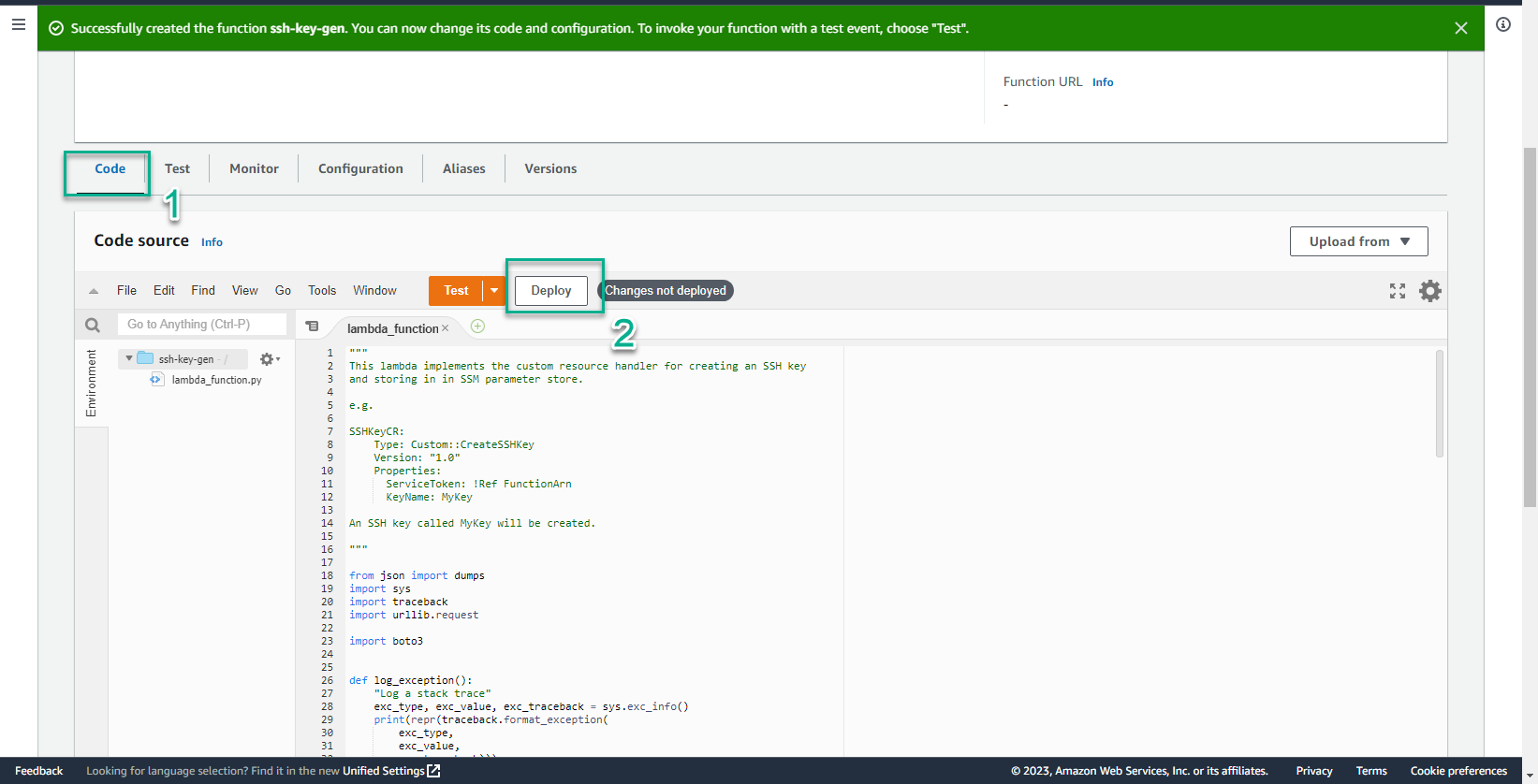
- After saving the Function, copy the Function ARN to a certain memo. This information will be used later in the tutorial.
